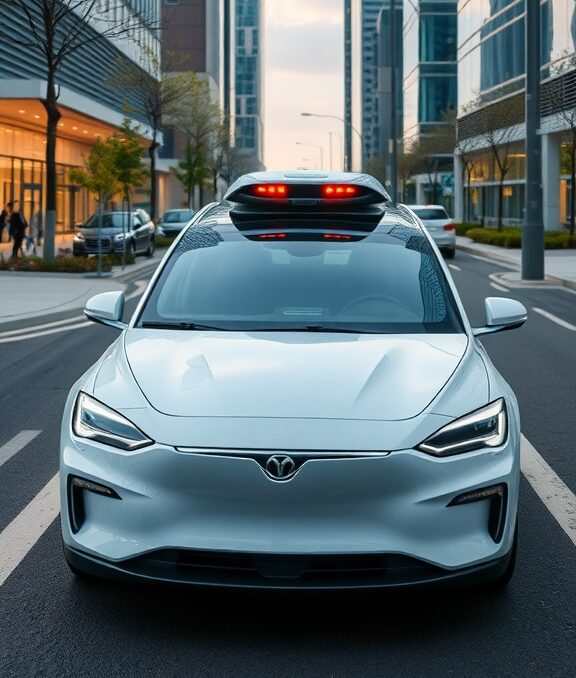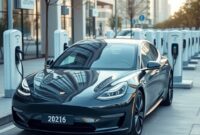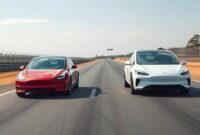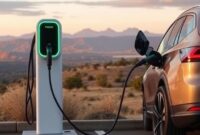Looking for the top electric cars hitting the market in 2025? You’ve come to the right place! Here’s a roundup of the models that are set to make waves, featuring everything from sleek designs to impressive range and tech-savvy features. Let’s dive in and see what the future of driving has in store!
Innovative Battery Technology Enhancements

The image showcases a futuristic battery design, highlighting the advancements in electric vehicle technology. With sleek, glowing lines and a transparent casing, it represents what’s on the horizon for electric car batteries.
Battery technology is evolving rapidly. The focus is on making them safer, lighter, and longer-lasting. This means cars can drive further on a single charge, and charging times are getting shorter. Imagine charging your car in just a few minutes!
Another exciting aspect is the use of new materials. Researchers are exploring solid-state batteries that promise higher energy density. This could lead to electric vehicles that are not just more efficient, but also more affordable in the long run.
As electric cars become more popular, these battery enhancements will play a crucial role. They ensure that driving electric is not just a trend but a practical choice for everyone. The future is definitely looking bright for electric vehicles!
Performance Comparison: Speed and Efficiency Metrics
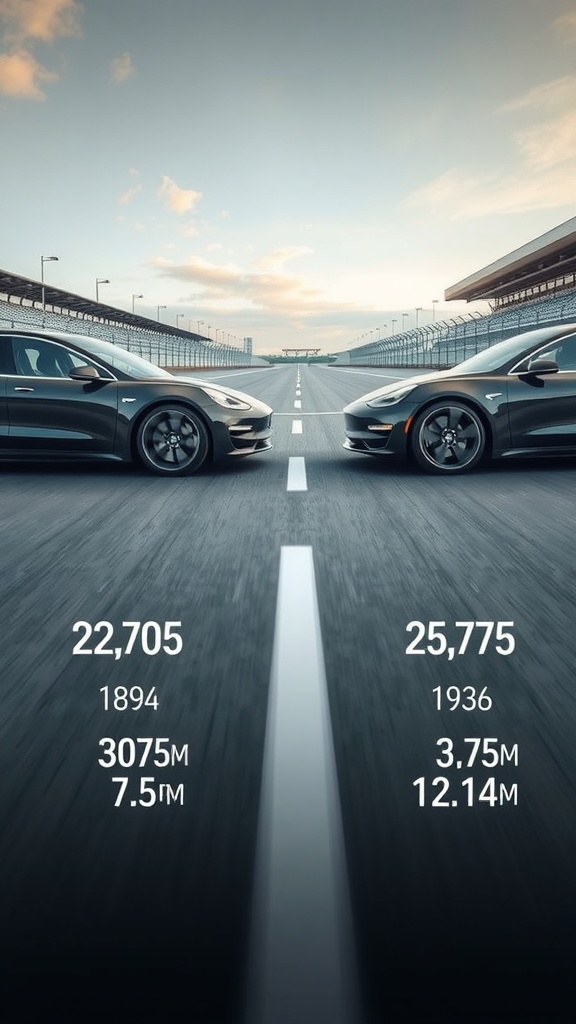
The image showcases a thrilling moment where two electric cars face off on a racetrack. Each vehicle stands proud, adorned with striking details and sleek designs, ready to demonstrate their performance capabilities.
On the left, we see a model with a speed metric of 22,705 and an impressive efficiency rating of 1894. This car excels in both speed and range, making it a solid contender in the electric car arena for 2025.
On the right, another vehicle boasts a slightly higher speed of 25,775 and an efficiency score of 1936. This model not only matches its rival in speed but surpasses it in other key metrics, showing potential for longer journeys.
Both cars have impressive distance metrics: 3075 meters and 7.5 GMs on the left, while the right car covers 3.75 meters and 12.14 GMs. These figures highlight the ongoing advancements in technology that enhance electric vehicle capabilities.
Affordability and Incentives for Electric Car Buyers
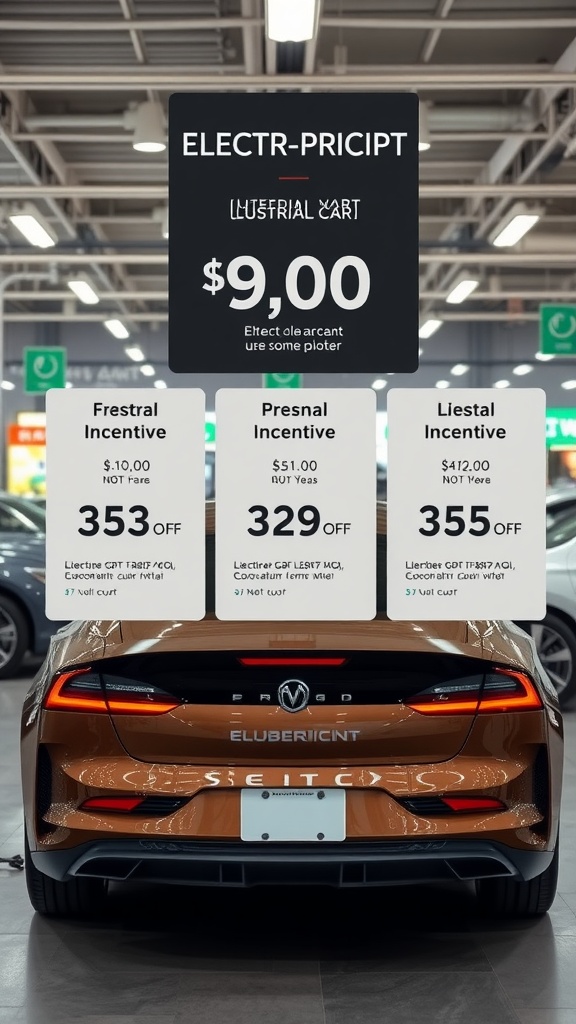
As we look forward to 2025, one of the most exciting aspects of electric cars is their growing affordability. The image here showcases some great incentive options that can help lower the overall cost of purchasing an electric vehicle. The price tag of $9.00 in the image seems to hint at a special offer or incentive that makes these cars even more appealing for buyers.
The listed incentives, such as the Frestral Incentive, Presnal Incentive, and Liestal Incentive, highlight the discounts available for prospective owners. Each incentive shows a significant amount off, making it easier for consumers to consider making the switch to electric. It’s important to check local listings, as these incentives can vary widely.
These financial incentives can make a real difference in the overall cost of ownership. From lower fuel costs to tax credits, buyers can save money in various ways. Imagine driving an electric vehicle while also enjoying the benefits of reduced expenses. It’s a win-win!
Additionally, with governments and manufacturers increasingly focused on sustainability, many are promoting electric cars through various financial subsidies. This means more options for buyers looking to cut costs while embracing a greener lifestyle. So, if you’re thinking about going electric in 2025, keep an eye out for these incentives!
Sustainable Materials in Electric Vehicle Design
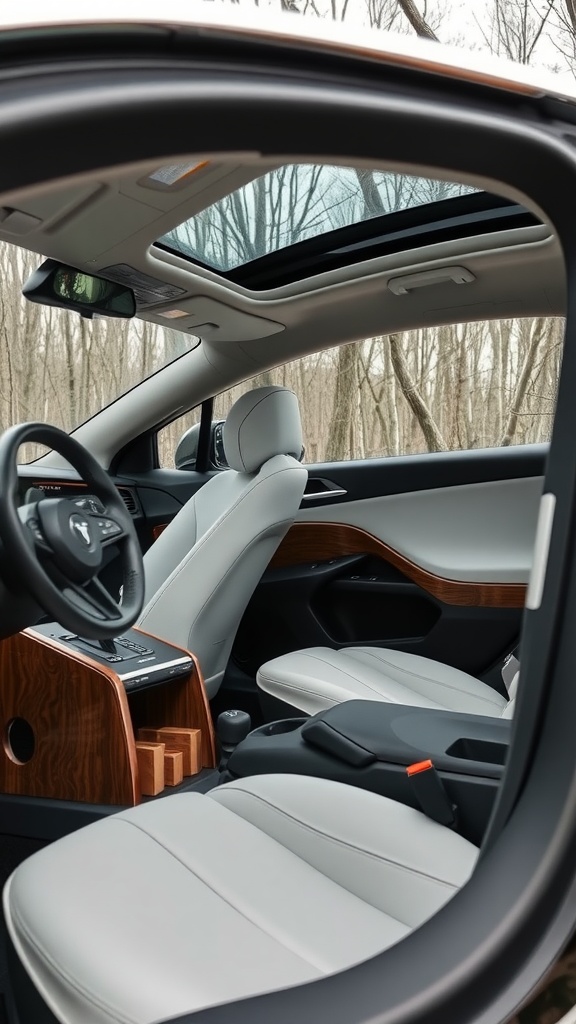
The interior of electric vehicles is becoming a canvas for sustainability. In the image, we see a sleek and stylish cabin designed with eco-friendly materials. The combination of light leather and wood accents gives a clean and modern feel, while also emphasizing a commitment to the environment.
Using sustainable materials in car design not only reduces the carbon footprint but also enhances the overall driving experience. For instance, recycled plastics and natural fibers are increasingly common in modern EVs. This approach minimizes waste and promotes the use of renewable resources.
Additionally, manufacturers are now focusing on the entire lifecycle of materials. By choosing options that are both sustainable and durable, they ensure that the cars remain efficient and visually appealing over time. The goal is to create a vehicle that feels luxurious while being kind to the planet.
Innovative Design Trends in 2025 Electric Cars
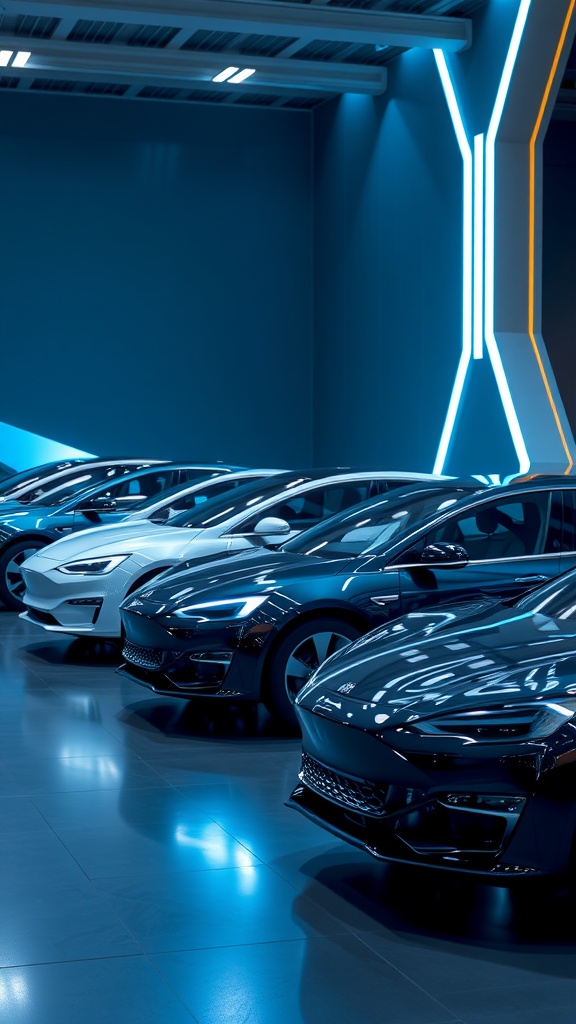
The future of electric cars is looking bright, and the image highlights some key design trends for 2025. As we step into an era of eco-friendly transportation, automakers are focusing on sleek aesthetics and functional designs that appeal to a modern audience.
The cars in the image showcase a mix of sophisticated lines and bold features. You can see that the manufacturers are exploring new shapes that not only enhance aerodynamics but also give a sporty look. Each vehicle stands out with its unique color and finish, which adds personality to the overall lineup.
Lighting also plays a significant role in design. The cars are surrounded by ambient lighting that enhances their features and creates a futuristic vibe. This trend reflects how brands are embracing technology not just under the hood, but also in the way each vehicle presents itself.
Interior designs are shifting towards minimalism, with an emphasis on user-friendly interfaces. Expect spacious cabins filled with sustainable materials and high-tech features that make driving and charging easier than ever. The image represents a movement towards creating an experience, rather than just a means of transportation.
Overall, these design trends suggest that the electric cars of 2025 will not only be functional but also stylish and inviting. With advancements in technology and a commitment to sustainability, these vehicles are set to change how we view driving in the coming years.
Autonomous Driving Features Revolutionizing Travel
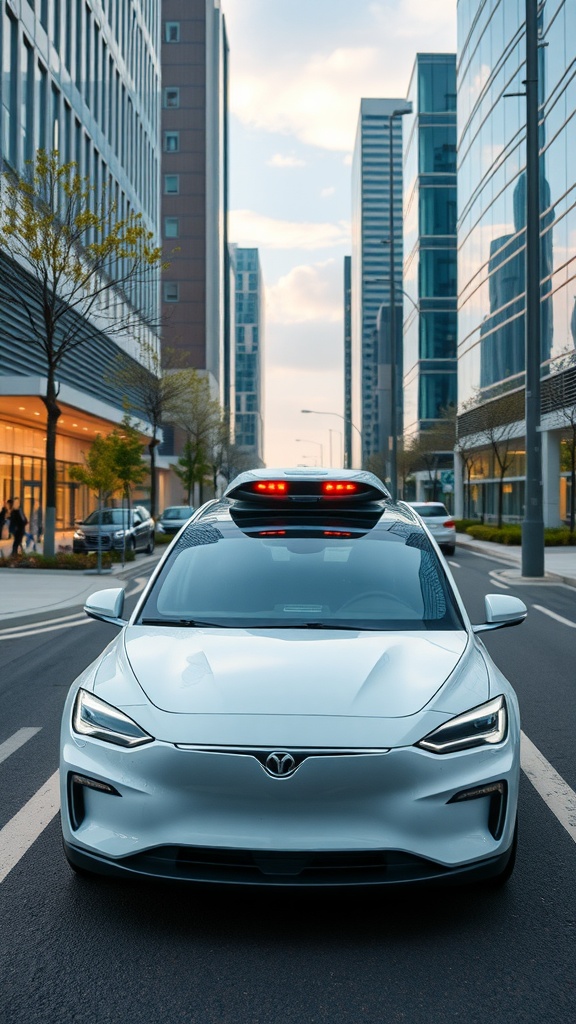
The image captures a sleek electric car navigating a modern cityscape, perfectly highlighting the blend of technology and urban living. As we move toward 2025, autonomous driving is not just a dream but a reality that’s transforming how we travel.
This vehicle represents the future, equipped with advanced sensors and cameras that enable it to interpret its surroundings. Imagine sitting back and enjoying your favorite podcast while your car safely handles the traffic. This convenience is just one of the perks that come with autonomous driving features.
Cities are becoming more accommodating to these vehicles, integrating smart infrastructure that communicates with cars. This synergy enhances safety and efficiency on the roads. Electric cars with autonomous capabilities promise to reduce traffic congestion, lower carbon emissions, and make commuting a more pleasant experience.
In 2025, we can expect even more impressive advancements in software and hardware, making these cars smarter and more reliable. If you’re considering an electric vehicle, keeping an eye on these developments will help you find a model that meets your needs.
Impact of Electric Cars on Urban Air Quality
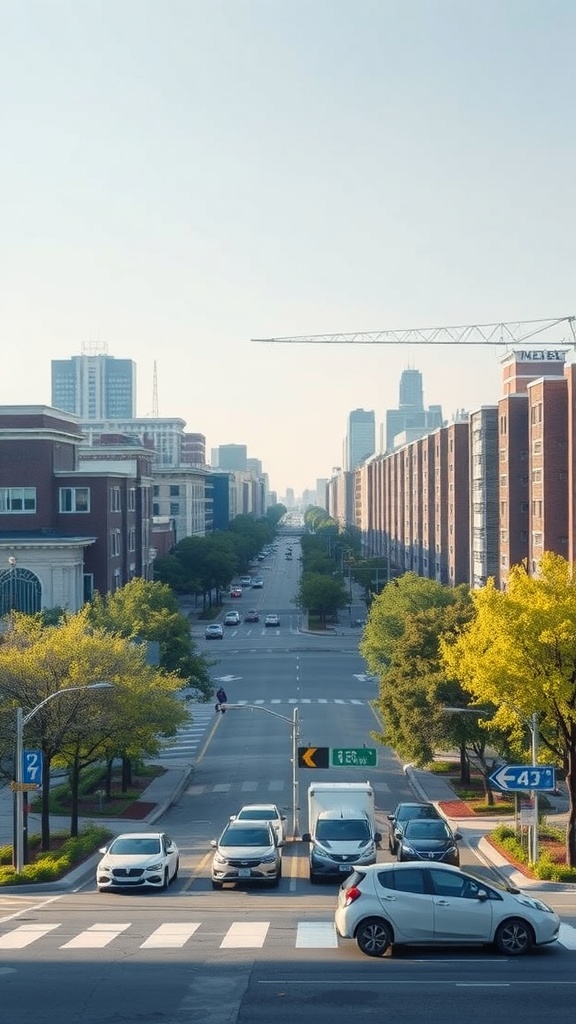
The image captures a serene urban street scene, showcasing a blend of modern architecture and greenery. This setting is not only visually appealing but also indicative of the cleaner air that electric cars can help achieve.
Electric vehicles (EVs) are becoming a more common sight in cities, and their presence is changing the air quality for the better. With fewer emissions compared to traditional vehicles, electric cars significantly reduce the amount of harmful pollutants released into the atmosphere.
The streets depicted in the image can benefit greatly from this shift. As more people switch to electric cars, we can expect a drop in smog and respiratory issues that often accompany heavy vehicle traffic. This is particularly important in urban areas where air quality is often compromised.
In addition to improving air quality, electric vehicles also contribute to a quieter environment. The reduction of noise pollution makes streets more pleasant for pedestrians and cyclists, promoting a healthier lifestyle. A cleaner, quieter city enhances the overall quality of life for residents.
As we look towards 2025, the increase in electric vehicles on the road is a positive trend. With continued advancements in technology and infrastructure, urban air quality may see significant improvements, making cities healthier places for everyone.
Charging Infrastructure Expansion Across Cities
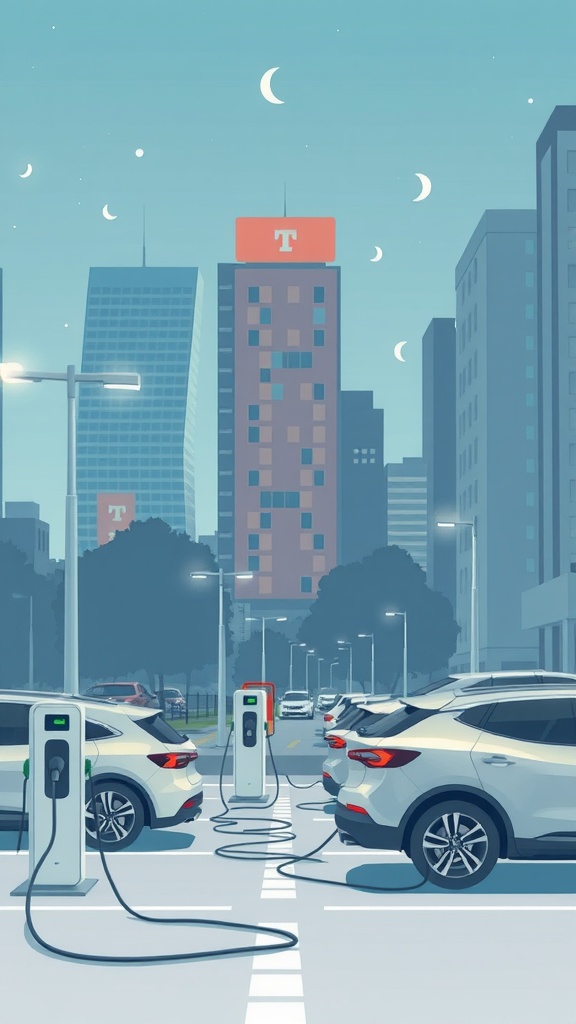
The image perfectly captures the essence of urban electric vehicle charging stations in 2025. With sleek cars plugged into chargers, it highlights the growing trend of electric vehicles in metropolitan areas. The backdrop of modern skyscrapers suggests a bustling city life, where sustainability is becoming the norm.
As more people transition to electric vehicles, cities are investing heavily in charging infrastructure. These charging stations are becoming a common sight, providing easy access for drivers. This expansion is crucial for encouraging more individuals to make the switch to electric cars.
The design of the charging stations in the image reflects a modern approach to urban planning. They are strategically placed in parking lots, ensuring convenience for drivers. The clear pathways and illuminated surroundings also enhance safety, making the experience user-friendly, especially at night.
With the rise of electric vehicles, cities are also focusing on integrating renewable energy sources into these charging stations. This not only supports the electric vehicle ecosystem but also aligns with broader environmental goals. By making charging available and accessible, urban areas can help reduce carbon emissions and improve air quality.
Consumer Preferences Shaping the Electric Car Market

The image shows a vibrant scene at an electric car showroom. A diverse group of people gather around several models, eagerly engaging with each other and the cars. The atmosphere is lively, reflecting a growing interest in electric vehicles.
These interactions highlight a key trend: consumers are more involved in the purchasing process than ever before. They are not just passive buyers; they want to learn, compare, and discuss their options. This is shaping how manufacturers design their offerings.
With sustainability at the top of many shoppers’ minds, buyers are looking for electric cars that not only perform well but also align with their values. Many are interested in features like battery life, charging speed, and environmental impact. It’s clear that preferences are evolving, pushing brands to innovate.
As we look toward 2025, the demand for electric cars is expected to grow. Consumers will likely continue to favor vehicles that are accessible, affordable, and packed with tech-savvy features. The image captures a moment filled with curiosity and enthusiasm, reflecting a shift in how people view transportation.
Future Trends: Electric Vehicles and Smart City Integration
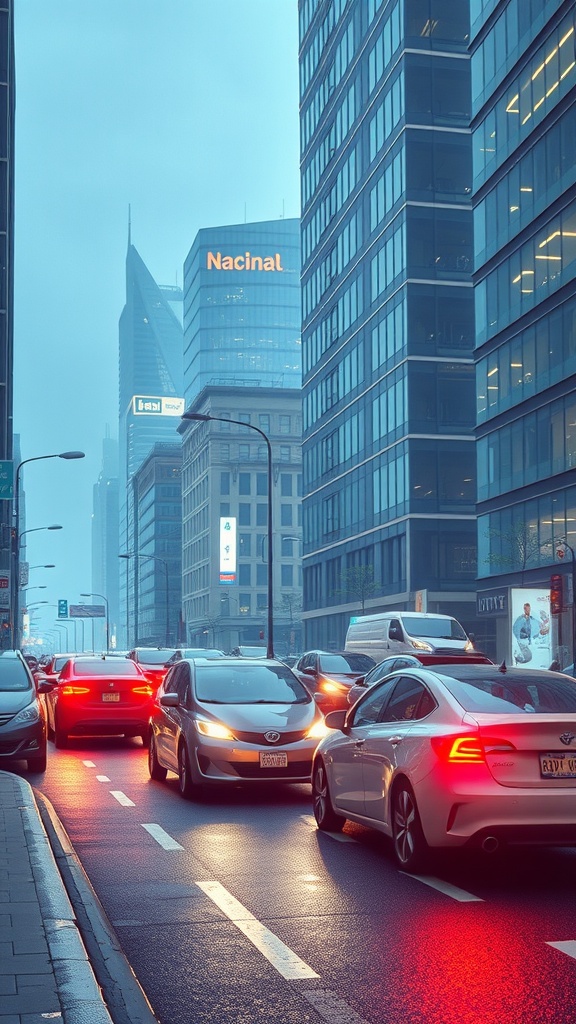
The image captures a bustling city scene, showcasing a mix of vehicles navigating through a modern urban landscape. The reflective surfaces of the buildings suggest a vibrant and busy environment, hinting at the growing integration of technology in our daily lives. The presence of multiple cars, including electric vehicles, indicates a shift towards greener transportation options.
As we look towards 2025, electric vehicles (EVs) are expected to play a significant role in urban mobility. Cities are evolving to accommodate these changes, integrating charging stations and designated lanes for electric cars. This will not only enhance the driving experience but also contribute to a cleaner atmosphere.
Moreover, smart city initiatives are focusing on improving traffic management and reducing congestion. With advanced technologies, real-time data can help optimize traffic flow, making commutes smoother for everyone. The blend of EVs and smart city infrastructure aims to create a more sustainable urban environment.
In conclusion, the future of electric vehicles in our cities looks bright. The combination of innovative technology and eco-friendly transportation will encourage a shift in how we perceive urban mobility. Embracing these trends can lead to healthier cities and happier commuters.
